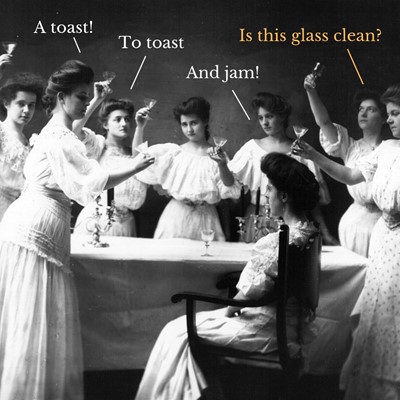
"To me YES, AND means don’t be afraid to contribute. It’s your responsibility to contribute. Always make sure you’re adding something to the discussion."
– Tina Fey
Perhaps you've taken an improv class or two. Maybe you've heard actors like Tina Fey talk about the lessons they've learned from improvisation.
Several of our coaches like participating in improv, because it sharpens your thinking, communication, and collaboration. When you're working with a group to create something on the spot—as you do in any improv session—you begin to see how certain choices can lead to a better product.
When you're presenting with another colleague or as part of a team, here are three improv concepts that can help you and your partners be more successful.
Make your partner look good and feel smart
Many of us seem to have competition baked into our bones. We've been competing for scholarships, on courts and fields, and for job opportunities much of our lives. When you present as a part of a team, remind yourself: You don't need to one-up or come in first.
Instead, imagine how it might work if you created a presentation team where everyone is working to make the other members look and feel their best. What would you do differently? How would you structure the presentation? How might you change what you say when you chime in? How would every person's confidence increase if they knew team members were going to help them succeed?
Listen and build
Key to making it up as you go along in improv is to accept not knowing what's next—making it important to listen carefully, then build on what you hear. If you already have an idea of how a scene is going to play out and you refuse to listen and respond, you bog down the scene and your co-conspirators.
When speaking as part of a team, this might mean listening to your presentation partners so you don't repeat or contradict them.
For example, even when you've planned and rehearsed your presentation, you may find someone else takes up a point you thought was "yours." Don't resent it or be bullheaded about saying it anyway. If you're listening carefully, you can adjust your message by either moving on to another point or offering some additional context for what was already said.
Beef up your 'Yes, and' mindset
Many of us have been in the uncomfortable position of having a colleague misspeak in a presentation—maybe getting a fact wrong or taking a position that seems out of step. It's even more uncomfortable when that wrong impression is presented by your boss.
In improv, the concept of "yes, and" means you take what the other person puts out there, and you don't negate it. You add to it. For example, if your scene partner says "How do you like my new dress?" you don't respond with "That’s not a dress." If you do, the scene can grind to a halt.
In a presentation, you might use the intention behind "yes, and" to present an alternate view of something, without negating what's been said:
Suppose you're a little alarmed when your presentation partner says to a client: Adding Option C is completely outside the budget for this project.
So you might say: Yes, and we can talk about some different ways to reach your goal or Yes, and we can look at priorities and talk about how to budget for them.
Of course, if it's critical to correct a misstatement, that's what you should do. But often, we negate what our colleagues present when we could instead offer up another way of looking at something—and that's how a "yes, and" mindset can help.
LEARN MORE
We provide more tips here for managing a presentation with multiple speakers.
Here's how improv helped one of our coaches enhance some key public speaking skills.
For more on bringing improv techniques to your business communication, check this out.






